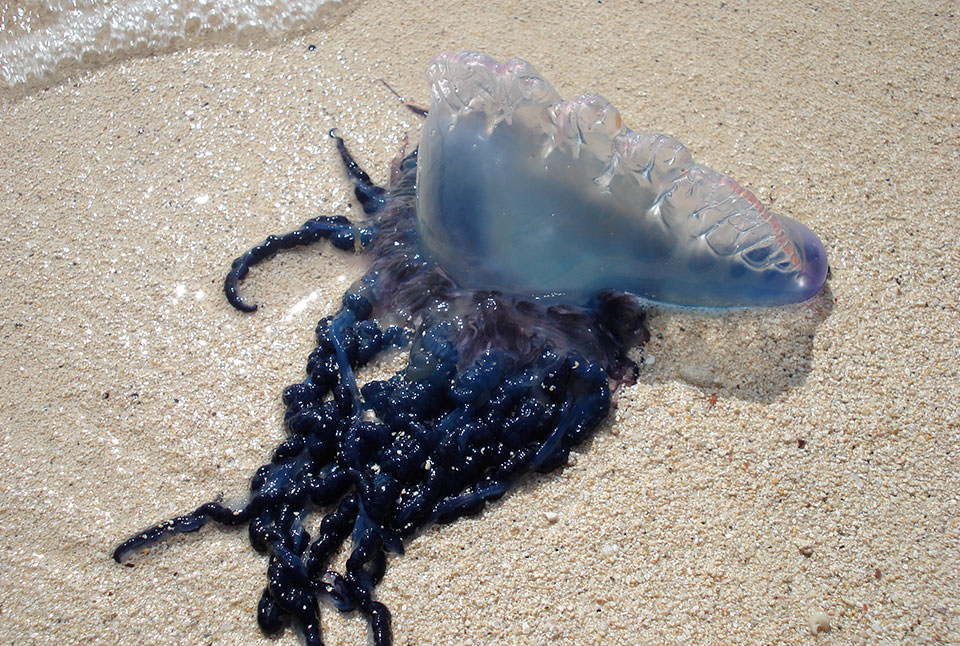Specimens of the feared Portuguese man o’ war have been washing up on beaches in Virginia and North Carolina over the last few weeks. What brings these unusual and stingy visitors to our shores is not a mystery. Blame it on the weather.
According to the National Oceanic and Atmospheric Administration (NOAA), the Portuguese man o’ war got its name because early sailors thought they resemble 17th-century Portuguese warships of the same name. Both have a sail. The Portuguese Man o’ War’s sail can reach six inches above the surface of the water. And while they look like jellyfish, the man o’ war is not actually a jellyfish. It is a siphonophore. Siphonophores are colonies of zooids, which are clones. In a man o’ war, four clones work together to make the colony work. Each clone has a specific task, like floating, capturing prey, feeding, or reproduction.
According to jellywatch.org, the man o’ war can be either left handed or right handed. Most are so-called left handed. Only a few are right handed. When the sail slants upper left to the lower right along the body axis, that is a lefty.
The man o’ war lives its life at the mercy of the wind and currents. The species can’t swim. According to Mackenzie Di Nardo, Vice President of Marketing and Public Relations at the Virginia Aquarium and Marine Science Center in Virginia Beach, they are typically found in tropical and sub-tropical waters. In our area, that means they are usually offshore in the warm waters of the Gulf Stream.
“Typically, the chance is unlikely to see this species in Virginia Beach, but it is possible for jellies migrating on the Gulf Stream current to get pushed towards shore,” she said.
That usually happens when we have a tropical storm, or longer periods of northeast winds. There has been an excess of northeast winds in coastal Virginia this year, bringing these creatures to our beaches.
You need to be wary of the man o’ war both in the water and on the beach. According to Di Nardo, “The species can sting days or weeks after being washed ashore.”
So don’t try to pick one up. Be sure not to step on the tentacles with your bare feet. Tentacles average 30-feet long! And the sting is painful.
According to Robert Donovan, the Virginia Aquarium’s man o’ war expert, “Known as one of the most painful stings from gelatinous creatures, Portuguese men o’ war cause severe pain in a victim. This presents immediately as a painful rash, showing beaded lacerations to eruptions of the skin. Sometimes superficial skin necrosis will occur.”
Donovan noted that he only knows of two fatalities from the man o ‘ war, and both of those victims had other conditions which made them more susceptible to the stings.
As we move into summer, the normal south and southwest winds should reduce their numbers close to shore. However, the forecast for Virginia’s coast this week still reveals winds from a variety of directions, including northeast.
The man o’ war is a fascinating creature that humans should watch from a distance. If you want to know more about them, and to check up on recent sightings, check out https://jellywatch.org.
-Kendall Osborne




